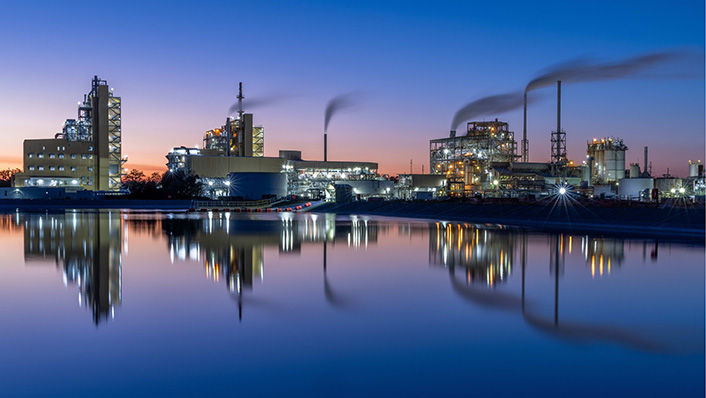Answering Refiners’ Questions

How does Grace approach refiners’ dual focus on butylene and propylene production?
In today’s competitive environment, petroleum refiners worldwide face increasing pressure to optimize yields, especially when it comes to increasing butylene and propylene production. Below, Grace experts Victor Batarseh and Bani Cirpriano offer perspectives on how to maximize butylene and propylene output, flexibly and affordably, with FCC catalysts and additives.
The Fluid Catalytic Cracking unit (FCC) is a key source of both propylene and butylene in a refinery. While the primary drivers for propylene and butylene demand are different, there is some overlap in the factors that influence their production in the FCC. Propylene demand stems mostly from demand for polypropylene and other chemicals such as acrylonitrile and cumene. Meanwhile butylene demand primarily stems from production of high octane alkylate used as a blending stock for gasoline. The FCC can produce high amounts of propylene and butylene and refiners have process knobs available to increase their production such as feedstock selection, implementation of FCC product recycles, adjustment of cat to oil ratio, and hydrocarbon partial pressure (among others).
At times, those knobs are not sufficient to bring refiners to a truly optimized yield slate with respect to propylene and butylene production. In this case, collaboration with an FCC catalyst partner like Grace is required to evaluate catalytic solutions and bring another degree of freedom to solving this challenge. To target increased LPG olefin production, it is important to ensure the FCC base catalyst drives appropriate levels of gasoline yield and olefinicity. The resulting gasoline olefins are then cracked into smaller LPG olefins via the incorporation of a pentasil zeolite technology. While this overall approach holds for both propylene and butylene, the choice of catalyst and pentasil technology can influence whether butylene or propylene selectivity is maximized.
Increasing Butylene Yields
Victor’s answer: Grace’s approach to increasing butylene yields is two-fold. Starting with a base catalyst that supplies sufficient conversion and gasoline olefinicity is key. Building on that foundation, Grace supports customers with both additive based and catalyst-oriented solutions. For refiners that require flexibility to quickly manipulate butylene yields with the backdrop of shifting constraints or feedstock availability, an additive solution is recommended. GBATM additives can be implemented to quickly increase butylene without as much propylene increase as a traditional ZSM-5 additive. During a commercial trial of GBA additives, the FCC observed increased butylene and propylene yields of approximately 1 vol% at equivalent conversion levels.
When refiners consistently require higher butylene yields, Grace considers adjusting base catalyst formulation to incorporate both Y and pentasil zeolites using our ACHIEVE® 400 catalyst platform, which delivers industry-leading butylene yields and selectivity. Incorporating the pentasil zeolite functionality directly into the base catalyst with optimized active-matrix surface area, zeolite-to-matrix surface area ratio, pore distribution, and Y-zeolite stabilization maximizes butylene yield and selectivity while also improving gasoline octane and LPG olefinicity. ACHIEVE® 400 Prime catalyst is Grace’s latest development on the butylene selective catalyst platform and delivers high butylene yields, selectivity, and LPG olefinicity. The figure below demonstrates step out butylene yield and selectivity performance of ACHIEVE® 400 Prime catalyst relative to competitor butylene selective catalyst.
Maximizing Propylene
Bani's Answer: As in the case of butylene maximization catalyst systems, when selecting a catalyst for maximizing propylene, the need for conversion is balanced against minimizing hydrogen transfer reactions to preserve gasoline range olefins. Traditionally, to minimize hydrogen transfer, max propylene catalysts are designed with low unit cell size and a coke selective matrix. Max propylene catalyst systems include a ZSM-5 technology that cracks gasoline olefins into LPG olefins while shifting the selectivity towards propylene. FCCs with a high propylene yield of 11wt% or higher are not uncommon. In these cases, a high addition rate of ZSM-5 is used. Relative to a lower activity ZSM-5 additive, using the highest activity ZSM-5 results in reduced additive consumption for a similar or higher propylene yield. Since ZSM-5 can only crack gasoline range molecules, using a large amount of ZSM-5 additive results in a dilution of the base catalyst activity and lower conversion of feedstock into gasoline olefin precursors. The main benefit of using a high activity additive is to minimize the dilution of the base catalyst activity vs. use of a lower activity ZSM-5 additive. To maximize propylene, Grace recommends using high activity ZSM-5 additives from the OlefinsUltra® family of additives or our newest innovation in ZSM-5 technology, ZAVANTI™ additives.
Refiners are adopting a variety of strategies to increase butylene and propylene from the FCC, depending on their specific hardware constraints, downstream handling limits, and regional economics. FCC catalysts and additives are key elements of the strategy as well, given the flexibility that they offer and the dynamic nature of the FCC unit operation.
To learn more, contact your Grace representative today.